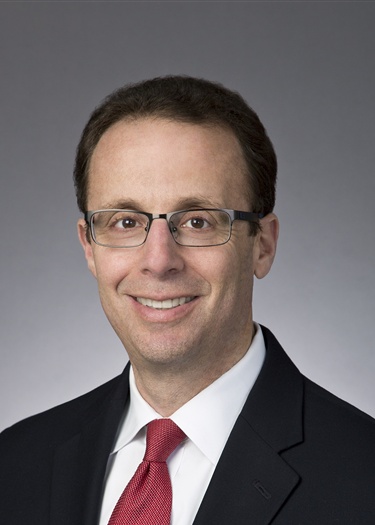Tax Update
Taxpayer-Favorable Research Tax Credit Opinion Issued in Little Sandy Coal Case
On March 7, 2023, the U.S. Court of Appeals for the Seventh Circuit issued an opinion in Little Sandy Coal v. Commissioner that will affect how the Internal Revenue Service (IRS) will audit research credit claims. While the appeals court affirmed the Tax Court’s decision in favor of the IRS, largely on the basis of a failure of proof, the case is more significant for the appeals court’s analysis, important elements of which are taxpayer-friendly.
The appeals court determined that the taxpayer did not make a record showing that any of its personnel engaged in a process of experimentation. The determination not to upset the Tax Court’s ultimate conclusion was not a surprise, as the Tax Court’s opinion was based on extensive findings of fact. The appeals court observed that the “Taxpayer did not offer a principled way to determine what portion of the employee activities for each vessel constituted elements of a process of experimentation, much less research activities.” Thus, the affirmance should have little relevance to other taxpayers because it was driven by the specific facts of the case, and to that extent the case may be distinguished.
More important, for other taxpayers, the opinion explicitly rejects the Tax Court’s conclusion that direct support time and direct supervision time are categorically not elements of a process of experimentation. The opinion indicates that support and supervision time must be analyzed just like direct research time: If the activities are research activities that constitute elements of a process of experimentation, they go in the numerator and the denominator of the process of experimentation fraction.1 Conversely, if they involve research activities under Section 174 but not a process of experimentation, they generally go in the denominator but not the numerator. Finally, implicit in the appeals court’s opinion is that if the support or supervision is not a research activity in its own right (such as a nontechnical direct manager overseeing personnel and budget decisions), it has no place in the fraction. However, if it meets the definition of direct support or supervision, it is still eligible for the credit if the business component the work supports or supervises meets the four-part test.
The opinion thus provides substantial benefit for taxpayers, as it rejects the Tax Court’s construction of the fraction that potentially put support and supervision in the denominator but never in the numerator. In perhaps the most important line, the opinion states, “Thus, the numerator is broad enough to encompass research activities that are not per se experimentation or testing.” By so stating, the opinion eliminates the perceived “silver bullet” on which the IRS has been trying to rely by compelling taxpayers to set up the following fraction:
Direct research that constitutes a
process of experimentation
All direct research plus all direct
support plus all direct supervision
In recent audits, we have observed that the IRS has argued that if that number is less than 0.8, the taxpayer loses, without regard to the nature of the support and supervision activities. Now, the IRS cannot assume that all support and supervision go in the denominator alone.
The opinion also clarifies that the costs of building and testing a prototype can be elements of a process of experimentation, but that requires a factual determination unique to each situation. The appeals court discusses how a taxpayer that actually builds a model for purposes of analyzing the efficacy of a design through a rigorous scientific testing method may very well be engaged in a process of experimentation.
The opinion disavows the Tax Court’s categorical exclusion of wages for producing pilot models from the numerator. The appeals court states that direct support and direct supervision activities should be considered in both the numerator and denominator of the fraction. It observes that “If a pilot model, by definition, is produced to resolve the correct type of uncertainty, it would be odd that pilot model production activities should not constitute research activities deductible under section 174.” Then it says that if the pilot model was used in a methodical plan to test a hypothesis, it is an element of a process of experimentation. The appeals court is explicit that just making a prototype model is not sufficient; instead, it must be used to evaluate one or more alternatives.
At the same time, the case is not a panacea for taxpayers. First, it confirms that taxpayers must apply the four-part test systematically on a business component-by-business component basis, something most taxpayers already do, either explicitly or implicitly. It criticizes the holding of a 5th Circuit opinion for relying more on a generalized feeling than the statutory and regulatory rules. Still, while taxpayers will have to show that they satisfy the fractional test, satisfying that test has become easier because of the costs that are now eligible for the numerator.
Second, the opinion states that uncertainty with respect to improvements to an existing product should be scrutinized to determine whether they affect the whole product or whether the only uncertainty relates to the improved component. “Put a different way, a manufacturer may not simply ‘add a few new bells and whistles’ on a pre-existing product and claim uncertainty as to the whole.” Presumably, however, where the improvements create uncertainty as to the whole, due to interdependent systems and integration challenges, the entire cost of building and testing the upgraded product can qualify.
The opinion includes the standard language often found in research credit cases. For example, it notes that “It is Taxpayer’s burden to show entitlement to the research credit and to retain records to substantiate eligibility for the credit.” It also reiterates that “Only after a taxpayer establishes that qualified research has occurred under Section 41(d) may we estimate, if needed, the amount of qualified research expenses ....” Finally, the appeals court emphasizes that while records in a particular form are not required, the taxpayer must retain records sufficient to show it meets the four-part test, although the proof can include testimony of knowledgeable employees.
The opinion indicates that simply building a product that is the first of its kind does not mean it was built as part of a process of experimentation. For example, the appeals court believes that the “raise-and-lower” test performed by the taxpayer on its dry dock was “less experimentation than it is a quality control test that establishes whether a customer’s specifications have been met.” Instead, it “confirmed the vessel’s functioning as designed. Its primary function was not to test any hypothesis or evaluate alternatives CIS had in mind.” Similarly, the deadweight survey for the barge was designed to measure water displacement, which is used to determine cargo capacity and fulfilled a common contractual specification for vessels. Thus, the appeals court says that test is more like quality control than experimentation. While these conclusions are open to question, they are unique to the specific facts of the instant case. Nonetheless, they do suggest that taxpayers should be prepared to demonstrate the linkage between testing a pilot model and experimenting to prove their hypothesis was correct or requires revision.
The opinion provides some useful advice to taxpayers. It suggests that taxpayers should not rely on the all-or-nothing approach of only supporting the largest definition of business component. The court observes that “Other taxpayers seeking to avail themselves of the research tax credit would be well-advised to document research activities for subcomponents.” Finally, the opinion ends with the observation that
The lesson for taxpayers seeking to avail themselves of the research tax credit is to adequately document that substantially all of such activities were research activities that constitute elements of a process of experimentation. Generalized descriptions of uncertainty, assertions of novelty, and arbitrary estimates of time performing experimentation are not enough.
The IRS may well try to cast this as a victory, in that the opinion confirms what taxpayers already knew — that they should apply the four-part test to their research analysis and assemble evidence to support their satisfaction of the four-part test. But that may best be viewed as “old news.”
The reality is that the opinion is helpful, especially for taxpayers with substantial time spent building and testing prototypes. It rejects the conclusion implicit in recent information document requests issued by the IRS that all support and supervision time automatically goes in the denominator of the process of experimentation fraction but can never be part of the numerator. Indeed, the appeals court could have simply issued a brief, fact-based conclusion that this taxpayer failed to prove its case. That the appeals court took the time to explain exactly why the Tax Court’s legal conclusions were wrong sends a clear message to the IRS that its current approach to auditing the credit by disallowing credits based on an overly aggressive application of the fractional process of experimentation is inconsistent with the law and needs to change.
1This is consistent with the position advanced by the National Association of Manufacturers in its amicus curiae brief cited by the appeals court.
Attorney Advertising—Sidley Austin LLP is a global law firm. Our addresses and contact information can be found at www.sidley.com/en/locations/offices.
Sidley provides this information as a service to clients and other friends for educational purposes only. It should not be construed or relied on as legal advice or to create a lawyer-client relationship. Readers should not act upon this information without seeking advice from professional advisers. Sidley and Sidley Austin refer to Sidley Austin LLP and affiliated partnerships as explained at www.sidley.com/disclaimer.
© Sidley Austin LLP
Contacts
Offices
Capabilities
Suggested News & Insights
- Stay Up To DateSubscribe to Sidley Publications
- Follow Sidley on Social MediaSocial Media Directory


